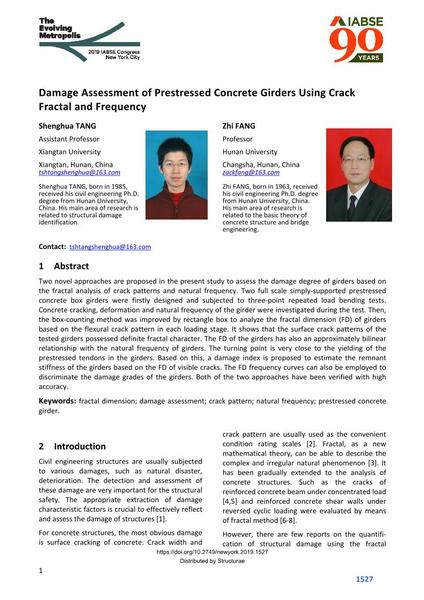Damage Assessment of Prestressed Concrete Girders Using Crack Fractal and Frequency

|
|
|||||||||||
Détails bibliographiques
| Auteur(s): |
Shenghua Tang
(Xiangtan University)
Zhi Fang (Hunan University) |
||||
|---|---|---|---|---|---|
| Médium: | papier de conférence | ||||
| Langue(s): | anglais | ||||
| Conférence: | IABSE Congress: The Evolving Metropolis, New York, NY, USA, 4-6 September 2019 | ||||
| Publié dans: | The Evolving Metropolis | ||||
|
|||||
| Page(s): | 1527-1532 | ||||
| Nombre total de pages (du PDF): | 6 | ||||
| DOI: | 10.2749/newyork.2019.1527 | ||||
| Abstrait: |
Two novel approaches are proposed in the present study to assess the damage degree of girders based on the fractal analysis of crack patterns and natural frequency. Two full scale simply‐supported prestressed concrete box girders were firstly designed and subjected to three‐point repeated load bending tests. Concrete cracking, deformation and natural frequency of the girder were investigated during the test. Then, the box‐counting method was improved by rectangle box to analyze the fractal dimension (FD) of girders based on the flexural crack pattern in each loading stage. It shows that the surface crack patterns of the tested girders possessed definite fractal character. The FD of the girders has also an approximately bilinear relationship with the natural frequency of girders. The turning point is very close to the yielding of the prestressed tendons in the girders. Based on this, a damage index is proposed to estimate the remnant stiffness of the girders based on the FD of visible cracks. The FD frequency curves can also be employed to discriminate the damage grades of the girders. Both of the two approaches have been verified with high accuracy. |
||||
